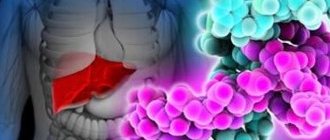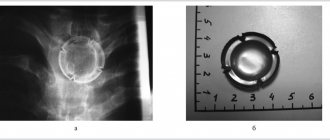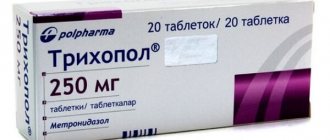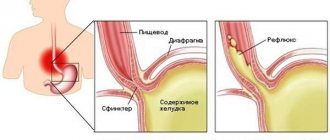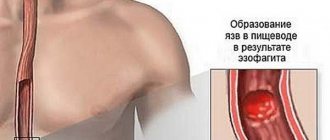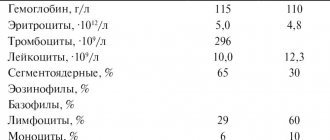A diagnosis of Shatsky's ring was made. The doctor reassured me, but warned that the problem might have to be solved surgically. What are these tumors and how to get rid of them? I lived calmly and didn’t even expect stomach problems.
Until I began to notice that after a good dinner my stomach began to ache and some kind of feeling of constriction bothered me. The discomfort is especially noticeable after a heavy meat dinner, but there are no problems with liquid food.
How is the disease characterized?
Shatsky's ring: what is it? Let's figure it out. It is characterized by thickening of the mucous membrane in the lower part of the esophagus. This narrowing resembles the appearance of a ring. For a long time after the formation of the disease, no symptoms are observed. The first signs appear when the narrowing is 13 mm or more. In this case, swallowing food becomes difficult.
This disease develops in 6% of cases among patients with GERD. In another way, Shatsky's ring is called stenosis or stricture in the area of the transition of the esophagus to the stomach.
Postoperative period
It is very important to follow some rules after surgery:
- For 5 days after surgery, to ensure rapid healing, avoid eating and drinking by mouth. Food is taken using a nasal tube. Intravenous nutrition is also used.
- On day 6 you can drink liquid (weak tea, kefir, herbal infusions). The patient should eat no more than 200 ml at a time.
- On day 8 the dose is increased. It is not advisable for the patient to eat sweets, milk with a high percentage of fat, soda, and raw vegetables. Food should be mild, pureed, without adding seasonings or spices. Eat foods that do not irritate the esophagus.
To normalize the functioning of the gastrointestinal tract and for stomach diseases, folk remedy therapy is used. Medicinal herbal infusions consisting of oak bark, wormwood, oregano, marshmallow root and more have proven themselves to be excellent.
It is worth remembering that the therapy process is very long and difficult. You must strictly adhere to the specialist’s recommendations. If treatment is started on time, the result will be comforting.
Factors and reasons for the development of the disease
In the development of the acquired Shatsky ring, factors and causes of formation are identified. Factors include:
- the presence of frequent heartburn ;
- frequent vomiting ;
- the presence of a long period of reflux ;
- burn of the esophagus for various reasons;
- performing surgery on the stomach and esophagus;
- frequent infectious diseases.
Often the cause is the reflux of acidic stomach contents into the esophagus. GERD are at risk . Constant heartburn and vomiting also cause acid to reflux into the esophagus. With constant and prolonged influence of hydrochloric acid on the esophagus, scar changes can form.
Shatsky's ring also applies to congenital diseases. The reasons for the formation of a congenital ring are poorly understood. This is probably due to a disturbance during embryonic development.
Description of the disease
In a healthy person, food and water pass without difficulty through the esophagus and into the stomach. But sometimes a ring-shaped narrowing occurs in the area of the esophageal-gastric intersection. This action reduces the lumen of the organ and complicates the passage of food. This name appeared in honor of the doctor who first explained this disease. Squeezing of the esophageal lumen has another name - stenosis, stricture.
Initial signs are formed when the organ narrows by 13 mm, or even more. Stenosis resembles the shape of rings or membranes.
The reasons for the formation of pathology are not fully understood. There are predictive factors that play a significant role in the development of the disease:
- GERD disease;
- frequent heartburn, vomiting;
- infectious pathologies;
- penetration of foreign particles into the organ;
- congenital pathology of the organ walls;
- previous surgical interventions on the gastrointestinal tract;
- radioactive exposure (very rare);
- the presence of esophagitis;
- burn of the esophagus of various origins;
- the probe remains in the organ for a long time.
The reasons for the appearance of a congenital ring are also poorly understood. This may be due to a disorder during embryonic development.
Many people have heard about such a phenomenon as the Shatsky ring, but what is it? This disease is a benign neoplasm in the esophagus in the form of a smooth mucous ring. The doctor, whose name served as the name for this disease, studied pathological narrowings in the lower part of the esophagus. As a result, the flow of food and liquid into the stomach slowed down, which over time provoked the accumulation of a large food coma.
Narrowing of the esophagus caused by Shatsky's ring
A narrowing of the esophageal lumen is called stenosis or structure. The reliable reasons for the formation of this pathology have not been fully studied.
Scientists and doctors identify several main and most probable ones:
- gastroesophageal reflux disease;
- frequent heartburn and vomiting;
- various types of burns of the esophagus;
- infectious diseases;
- neoplasms of various etiologies in the stomach and esophagus;
- long procedure of gastric and esophageal intubation;
- entry of foreign objects into the gastrointestinal tract;
- surgical operations on the esophagus or stomach;
- radiation exposure (rare);
- congenital pathology.
In a healthy person, any liquid or food bolus easily passes through the esophagus from the mouth to the stomach. However, in some people, there is a ring-shaped narrowing at the esophagogastric junction. This process leads to a decrease in the lumen of the organ and makes it difficult for the food bolus to move. Shatsky's rings got their name in honor of the doctor who first described this pathology.
Such a benign formation is found in 4-7% of people. At the same time, no symptoms are observed for a long time or even throughout life. However, stenosis can reach a critical stage, which will cause complaints and lead to a diagnostic search.
At the moment, the reasons for the appearance of Shatsky rings have not been precisely established, however, there are a number of factors that apparently play an important role in this process:
- Gastroesophageal reflux.
- Previous operations on the stomach and esophagus.
- Entry of foreign bodies into the esophagus.
- Burns of the esophagus associated with hot or chemically aggressive liquids.
- Infectious lesion.
- Tumor process in the wall of the esophagus and stomach.
- Radiation exposure or previous radiation therapy.
- Congenital damage to the wall of the esophagus, etc.
In any case, it is not possible to identify one specific cause of the appearance of Shatsky rings, which significantly complicates the treatment of this pathology.
Currently, Shatsky's ring is observed in approximately 6% of the total population of the planet. Most often, a person does not notice the manifestations of this disease until the last moment until serious problems begin with the passage of liquid and food.
How does the disease develop?
The mechanism of development of acquired narrowing is associated with the formation of scar changes. The presence of reflux ensures a constant flow of acid from the stomach into the esophagus. Hydrochloric acid has a negative effect on the esophageal mucosa. Since it differs from the mucous membrane in the stomach, that is, it is not adapted to constant exposure to acid. For this reason, changes occur in the mucous membrane. Constant inflammation leads to a gradual thickening of the lower esophageal sphincter.
Consequently, prolonged exposure to acid leads to changes in the mucosa such as scarring and thickening. A gradual narrowing occurs, which causes corresponding symptoms.
Blood supply and innervation of the esophagus. Lyphatic nodes and lymphatic drainage pathways from the esophagus
Nutrition of the esophagus
is carried out from several sources, and the arteries feeding it form abundant anastomoses among themselves.
Ah.
esophageae to pars cervicalis of the esophagus come from a.
thyroidea inferior. Pars thoracica receives several branches directly from the aorta thoracica, pars abdominalis feeds from the aa. phrenicae inferiores et gastrica sinistra. Venous outflow from the cervical part of the esophagus occurs in v. brachiocephalica, from the thoracic region - in vv. azygos et hemiazygos, from the abdominal - into the tributaries of the portal vein.
From the cervical and upper third of the thoracic esophagus, lymphatic vessels go to the deep cervical nodes, pretracheal and paratracheal, tracheobronchial and posterior mediastinal nodes. From the middle third of the thoracic region, the ascending vessels reach the named nodes of the chest and neck, and the descending vessels (through the hiatus esophageus) - the nodes of the abdominal cavity: gastric, pyloric and pancreaticoduodenal. Vessels coming from the rest of the esophagus (supradiaphragmatic and abdominal sections) flow into these nodes.
a - The figure shows groups of lymph nodes, the lesions of which are typical for lung cancer. A map of their locations was compiled by the International Association for the Study of Lung Cancer (IASCL). b - Designations of groups of certain lymph nodes included in the classification of lymph nodes (IASLC) and depicted in the adjacent figure.
The esophagus is innervated
from n. vagus et tr. sympathicus.
Along the branches of tr. sympathicus conveys the feeling of pain
; sympathetic innervation reduces esophageal peristalsis. Parasympathetic innervation enhances peristalsis and gland secretion.
Other video lessons on the anatomy of the esophagus, including Professor V.A. Izranova are presented here. Visit the section for other video lessons on human anatomy.
Why is this disease dangerous?
Shatsky's ring is a disease with a progressive course. The presence of GERD is a condition for further stenosis of the esophagus. Relatively rare diseases. Do not forget about the dangers of such a process. Since the esophagus narrows, the main danger is complete closure of the lumen. Refers to grade 4 stenosis . In this case, there is no way to eat normally. Only surgical treatment is required.
Therefore, when the first symptoms appear, you should consult a gastroenterologist. It is also important to promptly treat GERD and follow a diet.
Preventive actions
Videogastroduodenoscopy (FGDS)
Doctors make the following recommendations:
- Proper and correct treatment of diseases that can lead to the formation of Schatzki rings
- Avoid contact with aggressive liquids - acids, alkalis, and other dangerous compounds.
- After surgery or bougienage of the esophagus, conduct x-ray examinations regularly. The following frequency is shown: 30 days after surgery, 90 days, and then once every 6 months.
A list of methods for treating dysphagia depending on the condition of the disease, options for conservative or surgical treatment.
What are the symptoms?
Symptoms depend on the degree of narrowing of the esophagus. It refers to the organ through which food enters the stomach. Therefore, the first manifestation will be a swallowing disorder. Initially, the passage of harder foods will be difficult. Gradually, a desire arises to give up foods such as bread.
At the same time, there is a feeling of a foreign body behind the sternum. This is due precisely to the disruption of food passage in the sphincter area. It turns out that food simply slows down its passage. As the narrowing progresses, the feeling of discomfort behind the sternum becomes more intense. It occurs only at the time of eating. Patients always try to take plenty of liquid with their meals. This makes the product less hard and easier to pass through. Initially, it is difficult to swallow solid and then liquid food.
Over time, discomfort behind the sternum is replaced by painful sensations.
They are associated with spasm of the muscular structures of the esophagus.
Since stenosis interferes with the evacuation of the food bolus. Therefore, a strong contraction occurs to push food through. This is what causes pain. Characteristic already for the 3rd degree of narrowing . Gradually, against the background of refusal to eat, a body weight deficit develops. Malnutrition is characterized by general weakness and malaise. The risk of developing infectious diseases increases.
Nausea and may occur . Often such symptoms occur after eating. Literally in a matter of minutes after swallowing a bolus of food. These manifestations directly depend on the degree of narrowing. The larger it is, the more often such symptoms will occur.
More information about the symptoms of narrowing of the esophagus is described in this article.
Diagnostic methods
Gastroscopy (FGD) in Nizhny Novgorod
Suspicion of stenosis of the esophageal region in a patient arises based on the results of the anamnesis and clinic. If there is a defect such as cicatricial narrowing of the esophagus, it is determined using endoscopy and x-ray examination.
- Esophagoscopy - the doctor determines the diameter of the esophagus, the level of narrowing, examines the epithelium, takes a biopsy to determine the cause of the narrowing, and identifies defects in the form of ulcers, scars, tumors. Disadvantage of the examination: inability to examine the organ after the narrowed area.
- X-ray – done with a contrast agent, barium sulfate is used as contrast. Contrast allows you to see the lumen and relief of the organ, identify defects, and evaluate peristalsis. Using the method, differential diagnosis is carried out to exclude local protrusions of the esophageal walls or foreign bodies. These are the radiological signs of esophageal stricture.
How to identify Shatsky's ring?
The first thing that helps a doctor diagnose a disease is the symptoms. The process of identifying the disease begins with them.
Research methods are instrumental methods. These include x-rays and FGDS. These two methods are of greatest value for recognizing the disease.
X-ray examination is carried out with a special contrast agent. For these purposes, barium suspension is used. It is important that this method is quite informative. It helps determine the presence of a narrowing. Place of stenosis and degree. Additionally, X-rays evaluate the relief of the mucous membrane of the esophagus and stomach. This method allows a complete assessment of the transit time of barium into the stomach at the site of stenosis. Is important for determining the degree.
FGDS is the second and no less informative method. Thanks to him, the entire education is visually assessed. During the procedure, carefully examine the narrowing itself. The cause and extent are identified. Additionally, the condition of the mucous membrane of the esophagus and stomach is assessed. If necessary, a biopsy may be taken.
Thanks to these methods, the disease is identified and an accurate diagnosis is made.
Diagnostics
The presence of a Shatsky ring can be determined using the following diagnostics:
- Endoscopy (fibroesophagogastroscopy) - allows you to visually study the position of the organ wall, helps to establish the location and stage of stenosis. This action is completely harmless and can only cause some discomfort.
- X-ray – the study is used with a contrast agent. In order to study the patency of the esophagus and the stage of damage to motor function, barium sulfate will be needed. The procedure is carried out with preliminary preparation. The method is considered very effective.
The choice of treatment method remains with the specialist who observes the patient.
How is the disease treated?
The treatment process consists of two directions. These include:
- conservative methods;
- surgery.
Among conservative ones, medications and diets are prescribed. The following medications are used for this disease:
- antacids;
- antisecretory;
- gastroprotectors;
- prokinetics;
- antispasmodics;
- sedatives.
If a patient has GERD and often experiences heartburn, he is prescribed medications such as:
- Almagel;
- Omeprazole;
- De-nol;
- Mottilium.
, antispasmodics are used in the form of No-shpa . Its action is aimed at eliminating spasms and reducing pain.
It is recommended to adhere to a strict diet. Since an increase in acidity and its overflow often occurs when an error in eating occurs. Fried and fatty foods should be completely excluded. Excessively salted and seasoned foods are prohibited. All food should be finely chopped and undergo gentle heat treatment. Compliance with diet and drug therapy ensures a minimal level of progression.
Read more about how competent medication and other treatment of the disease should be carried out in this article.
Surgery
It is carried out when there is no effect from the drugs. Bougienage is used for these purposes. The narrowed area is expanded using special bougies. Expansion using a balloon is also used.
In more severe cases, when more extensive surgical care is needed, an operation such as esophageal stenting is performed.
Treatment of narrowing of the esophagus in adults
To pass the food bolus, you need to chew the food thoroughly.
There are 2 ways to get rid of esophageal stenosis. With minor narrowing and at the initial stage of the disease, conservative therapy is used.
The patient is recommended diet No. 1 or 1A. To facilitate the passage of the food bolus, it is recommended to chew food more thoroughly.
If conservative therapy does not help, surgical treatment is performed. Initially, it is recommended to perform a bougienage procedure of the esophagus.
To do this, a bougie of a certain diameter is inserted into the narrowed area. After some time, the used instrument is removed, and a tube with a larger diameter is installed in its place.
The procedures are carried out several times until the lumen of the esophagus reaches the desired size. An alternative to bougie insertion is balloon dilation of the esophagus. A balloon is inserted into the organ. As the volume of the balloon increases, the narrowed section of the esophagus stretches. If these methods do not bring the desired result, then surgical intervention is performed.
